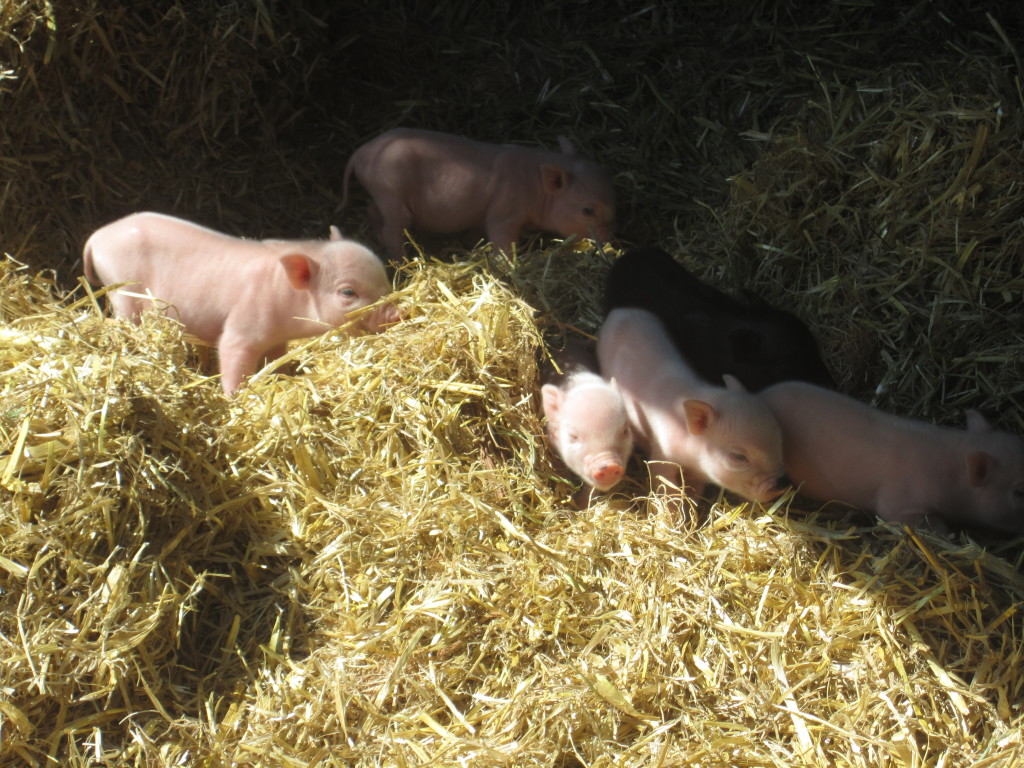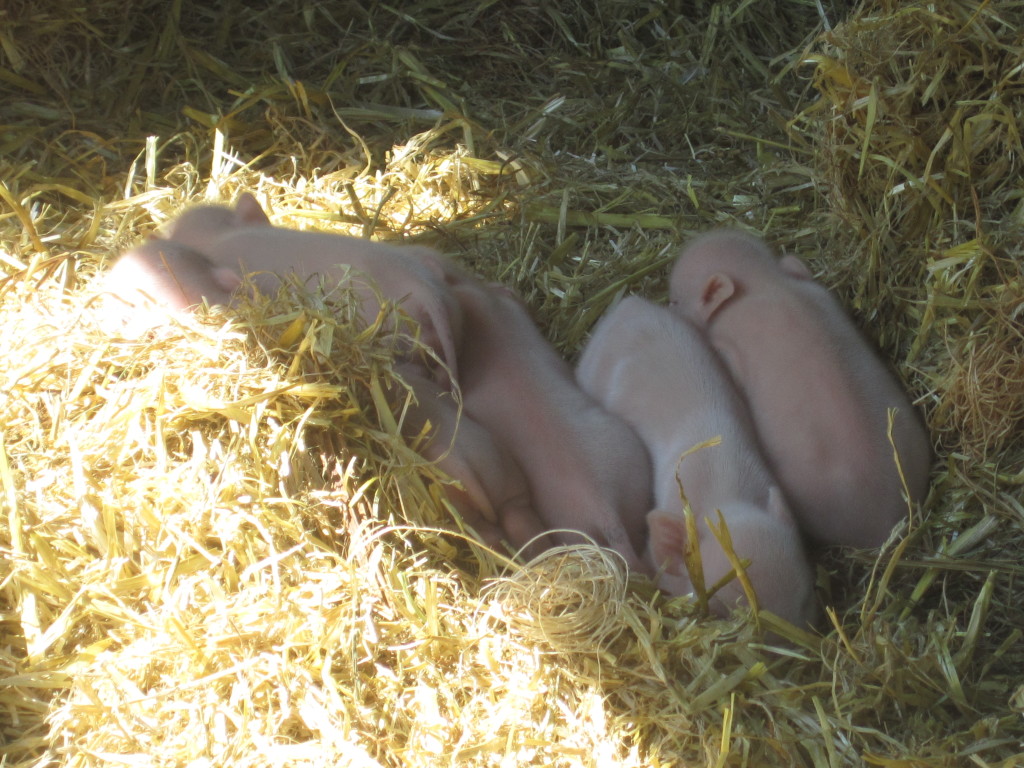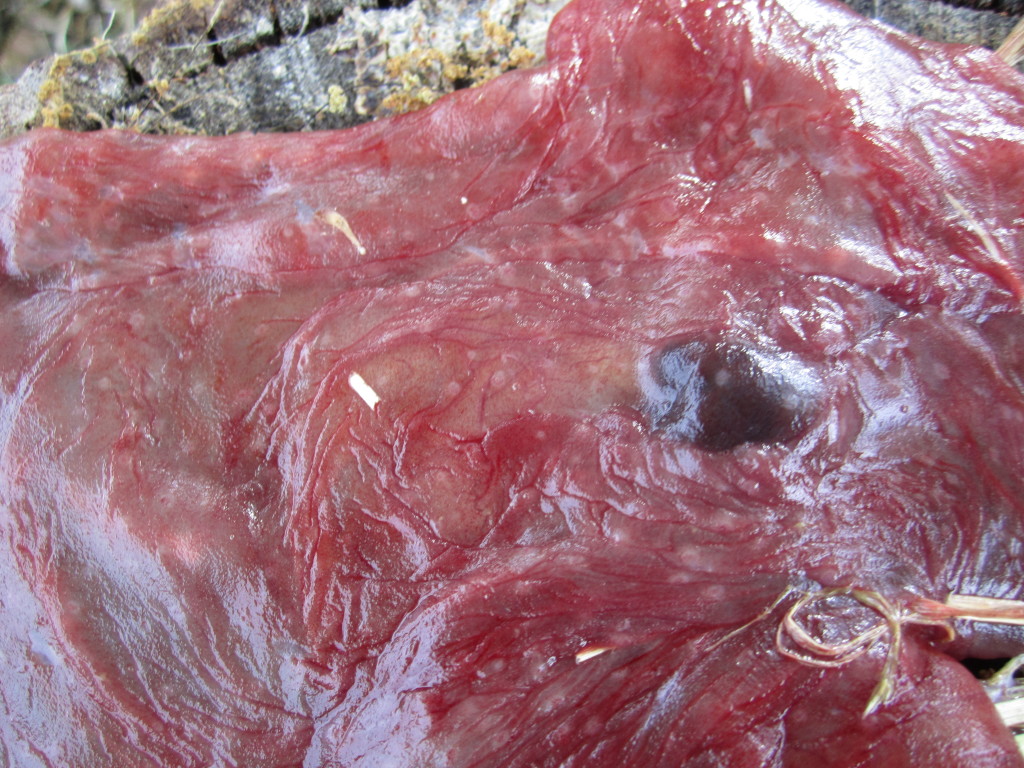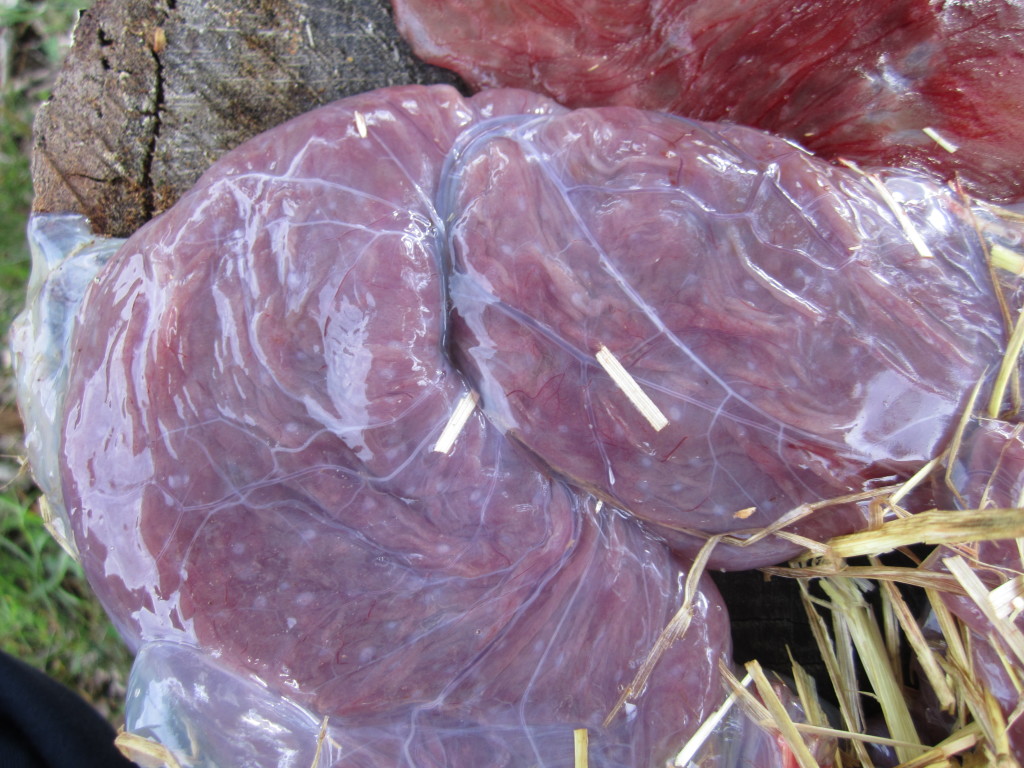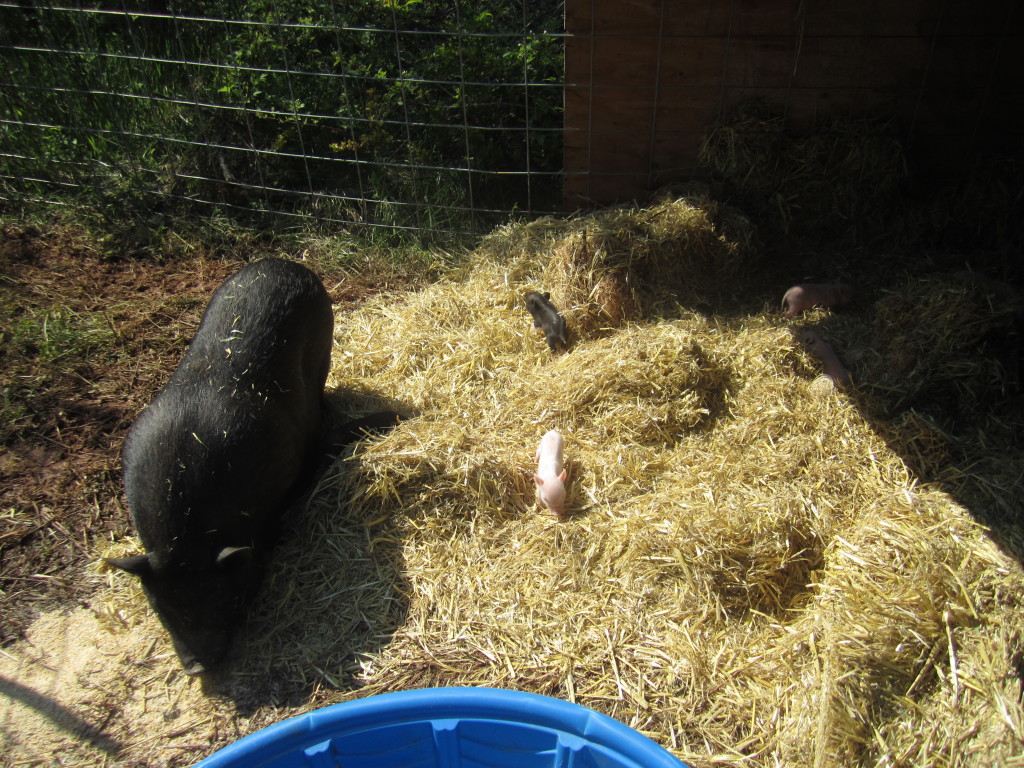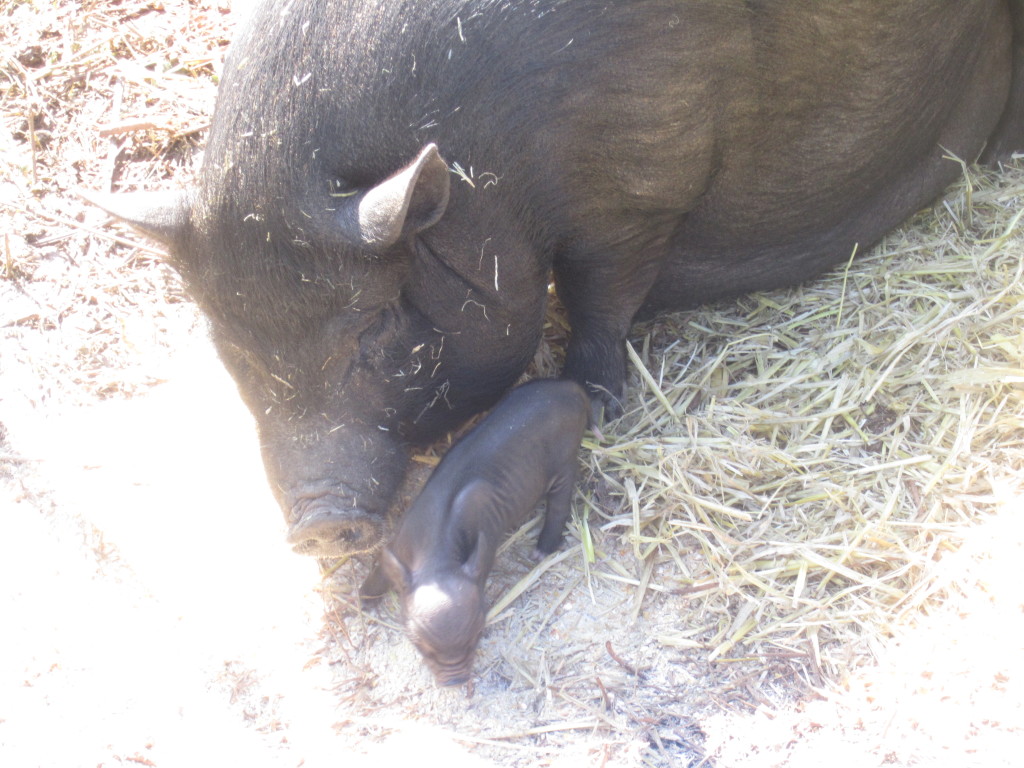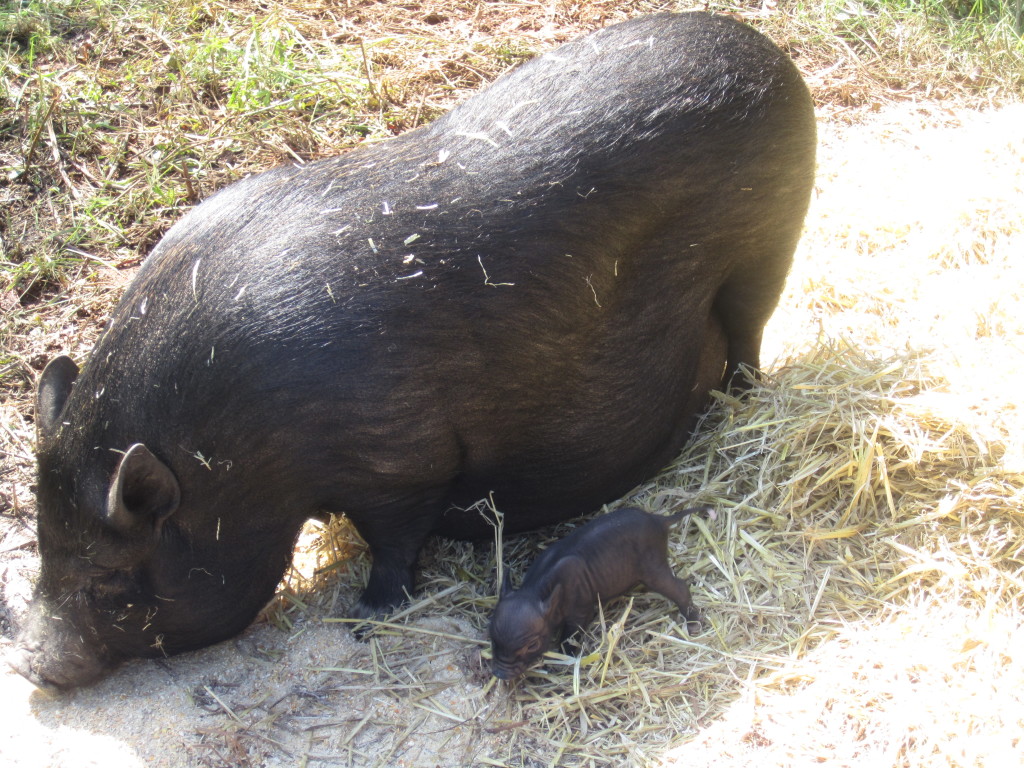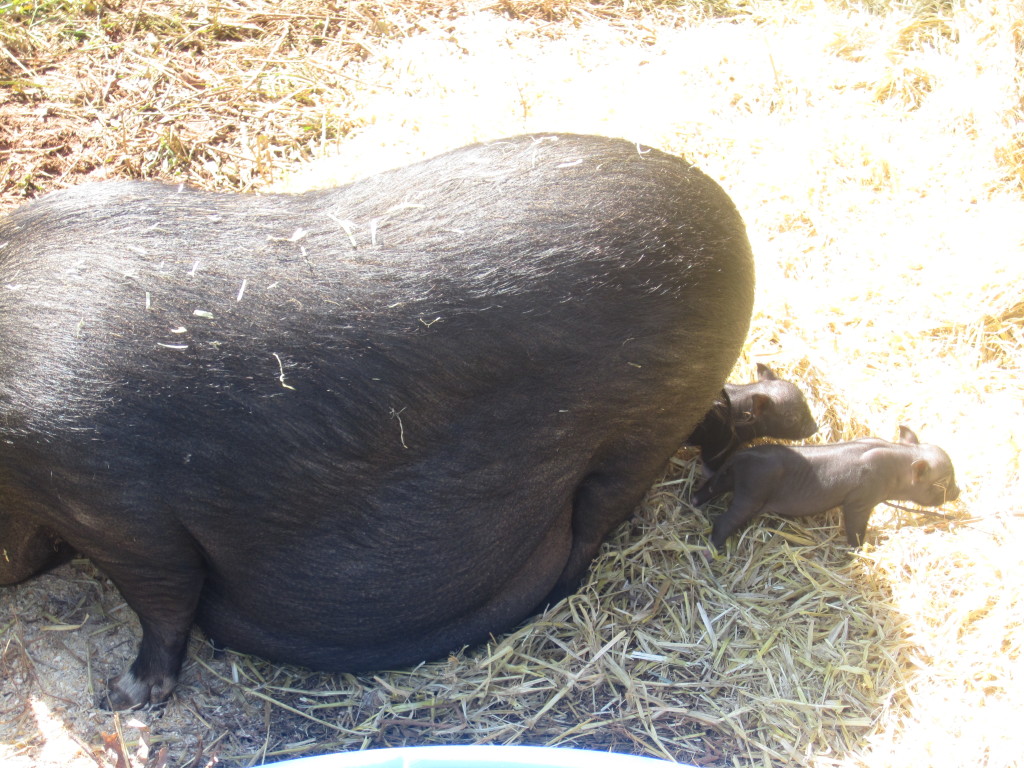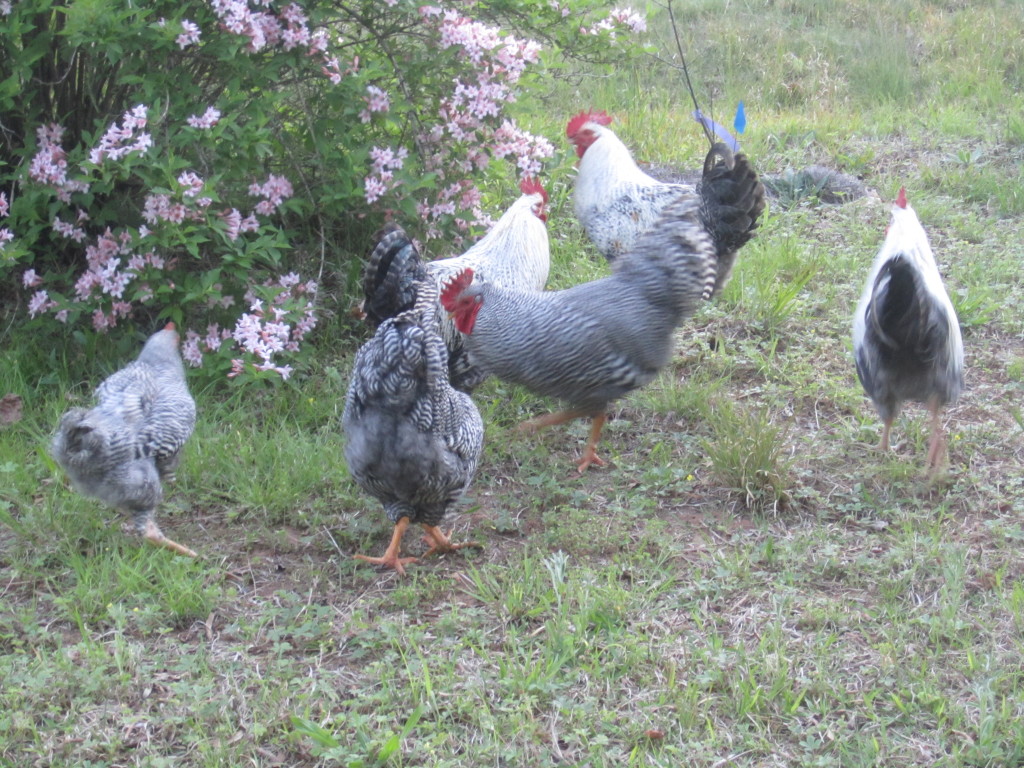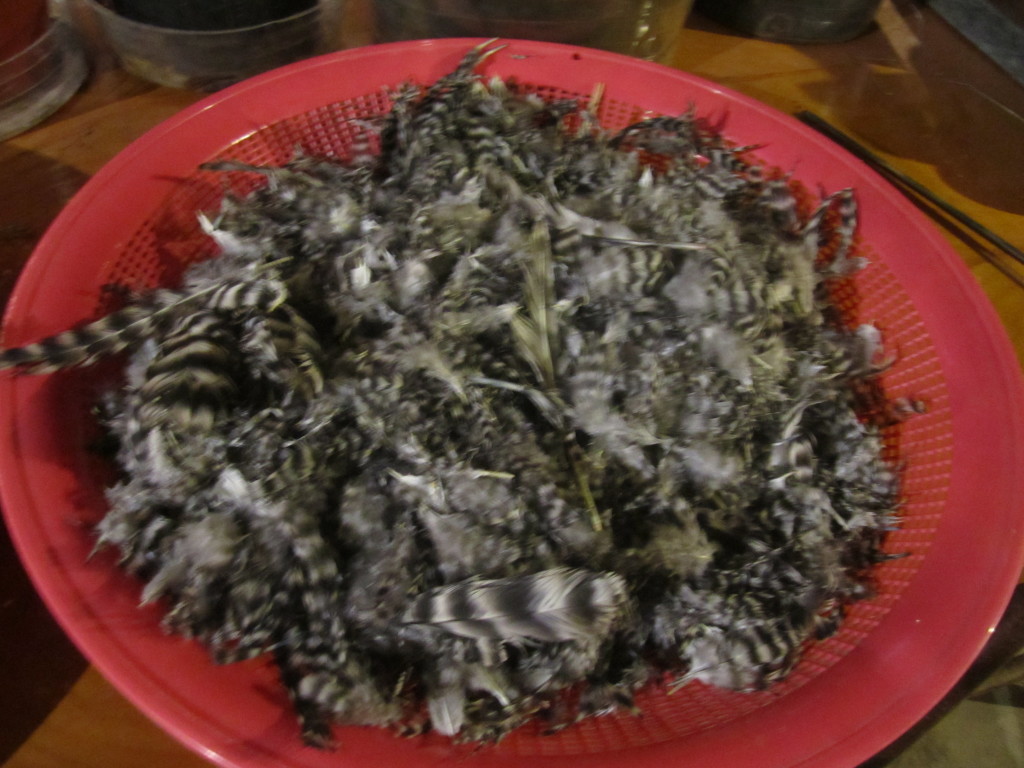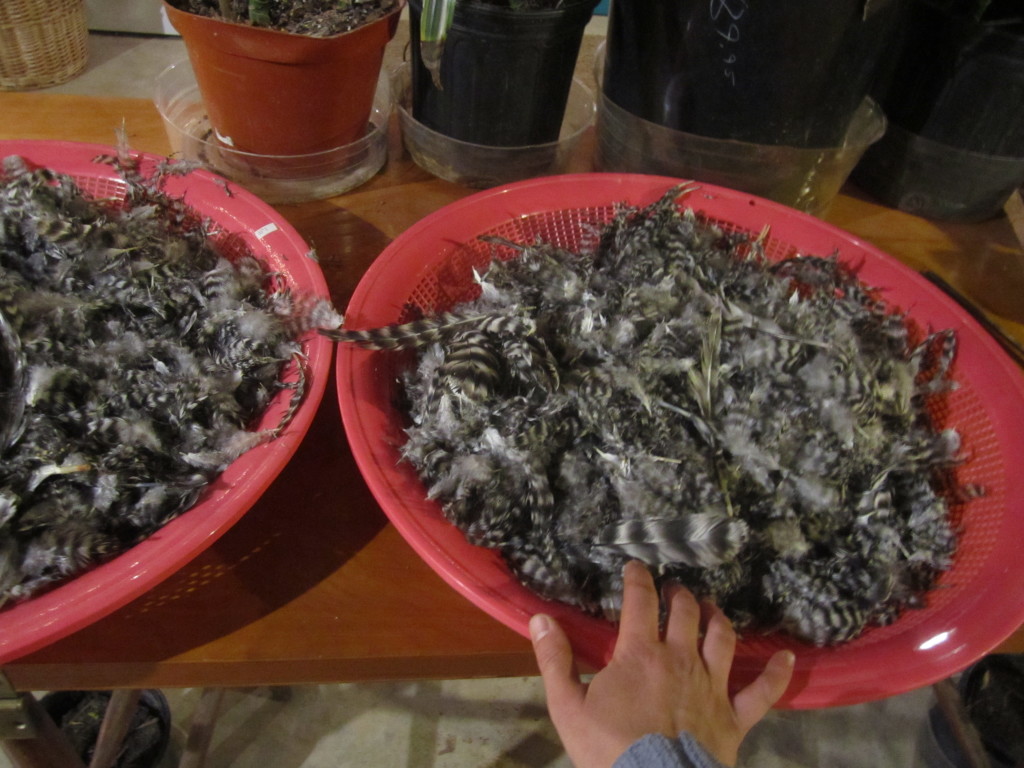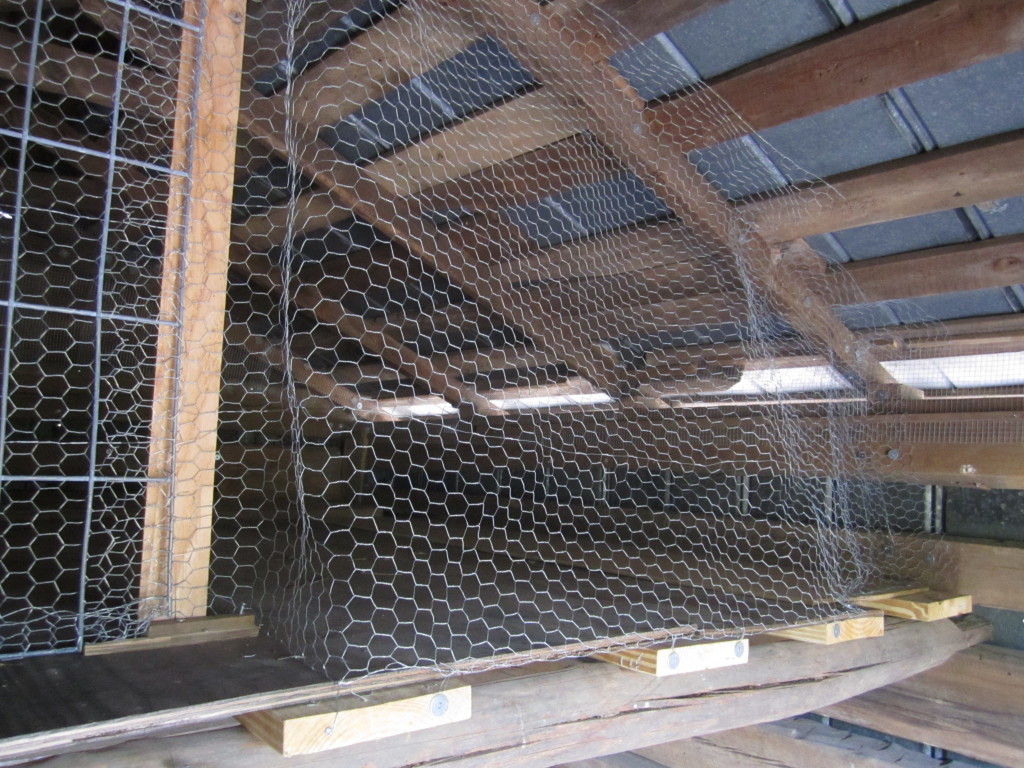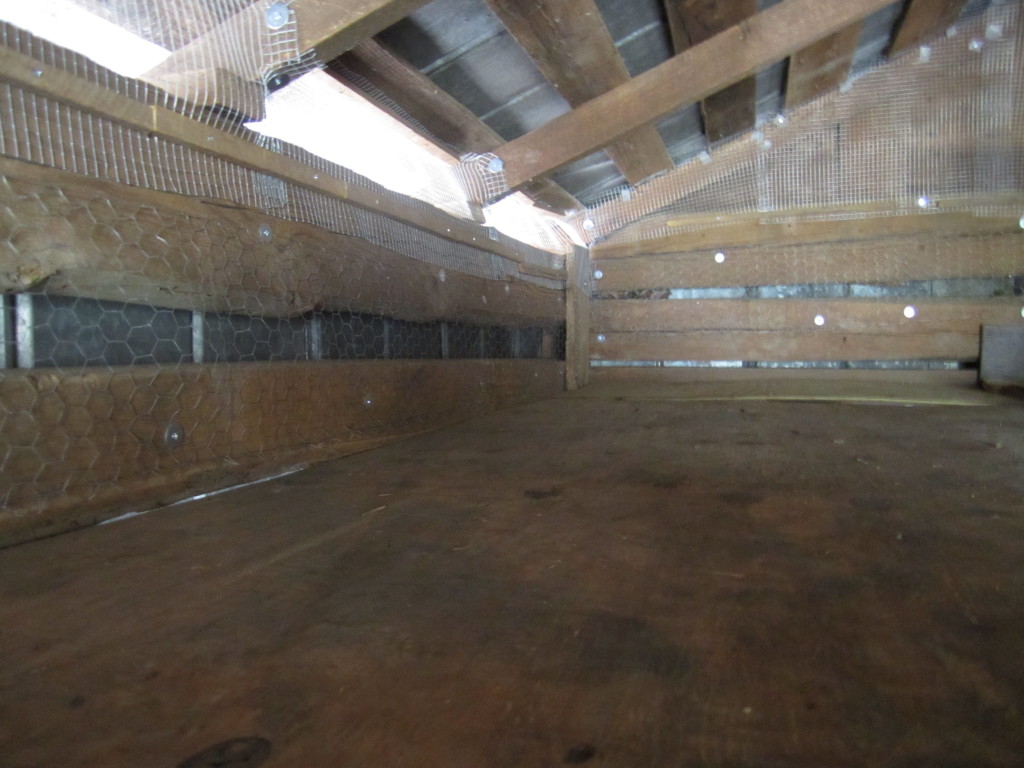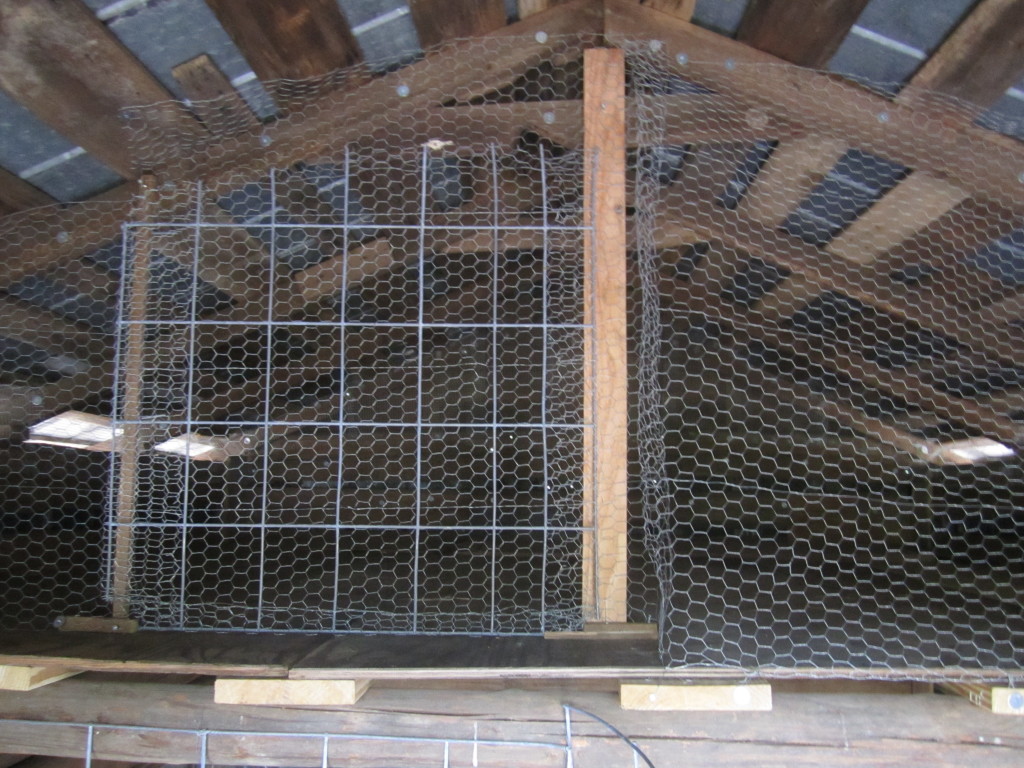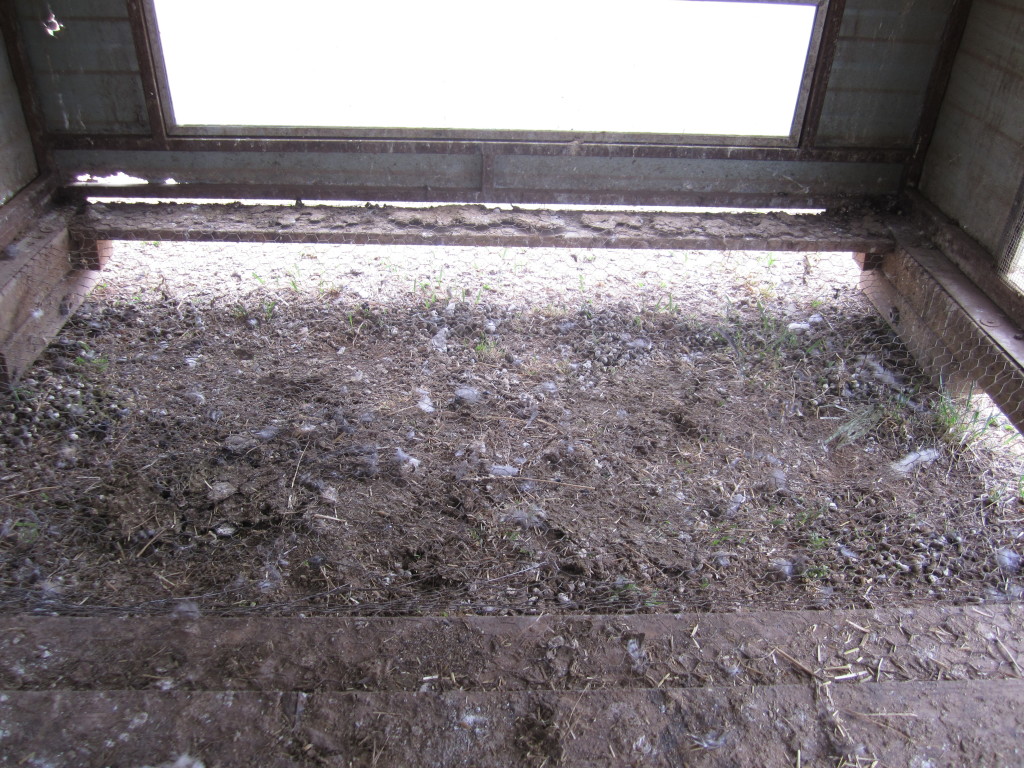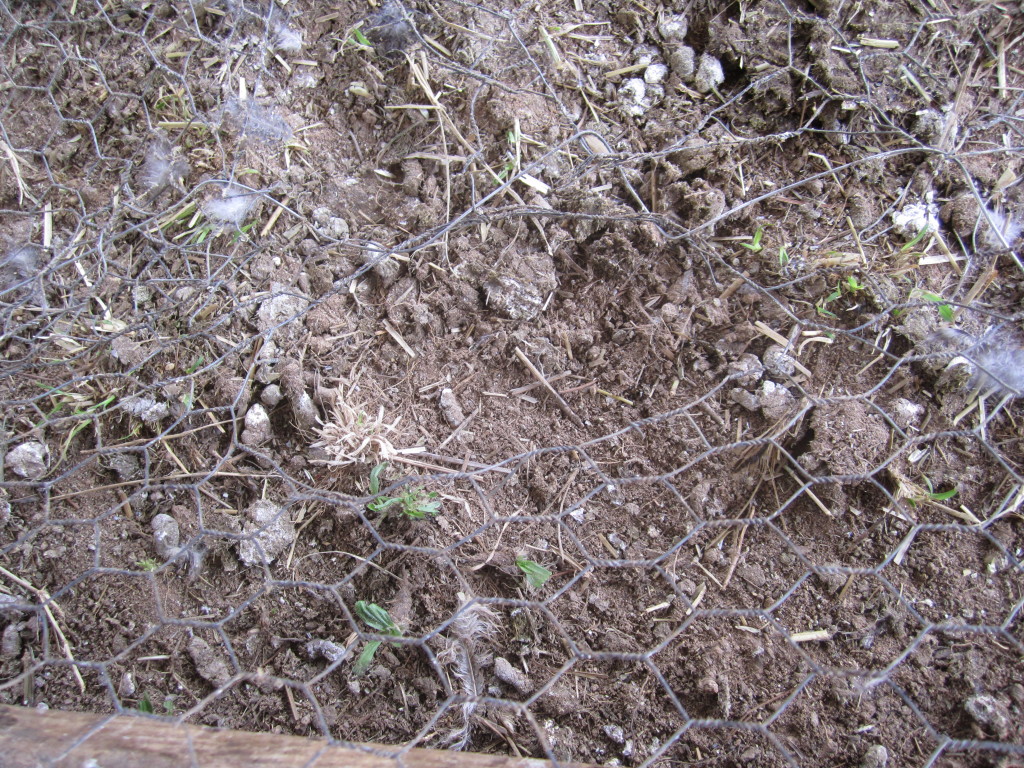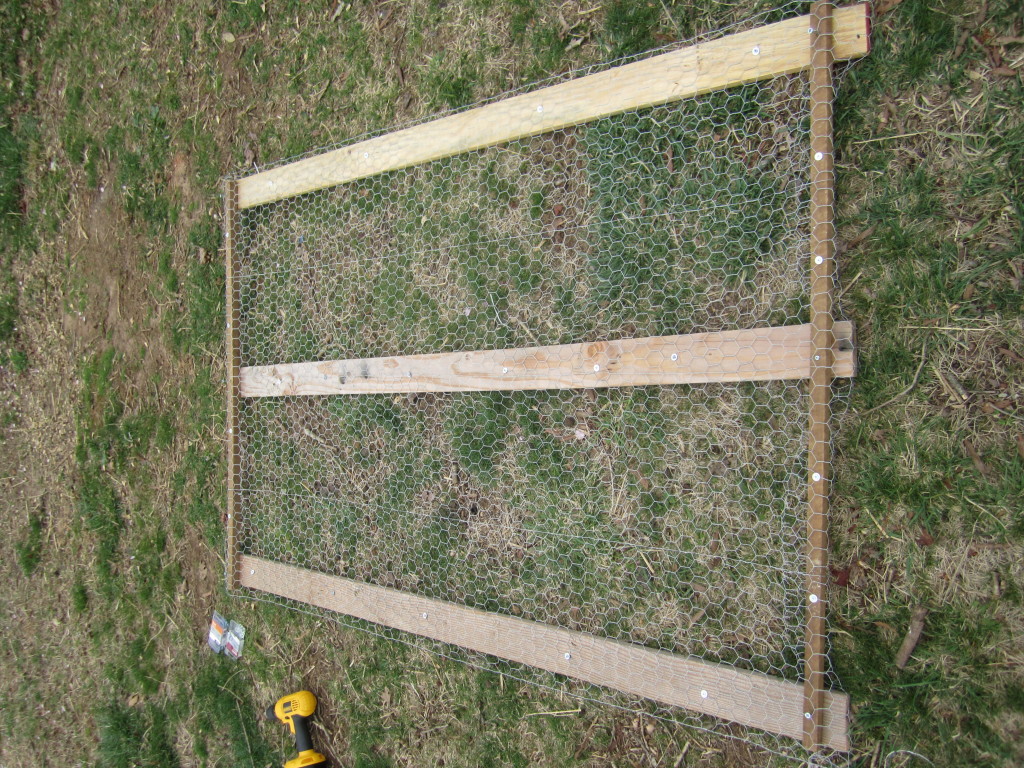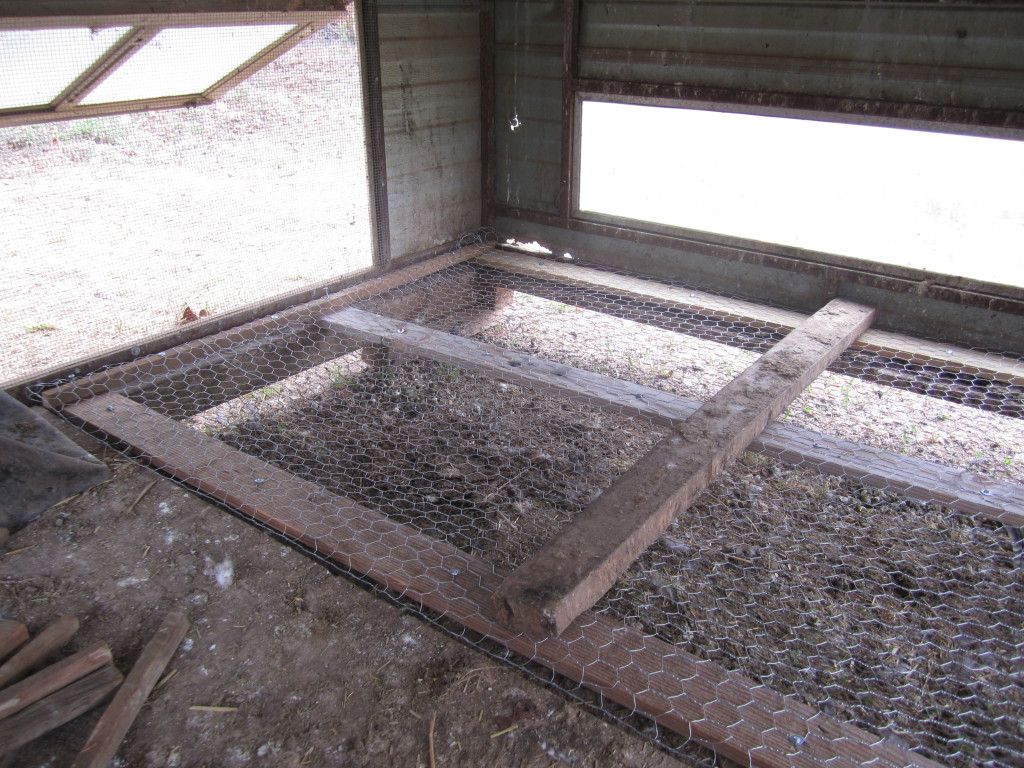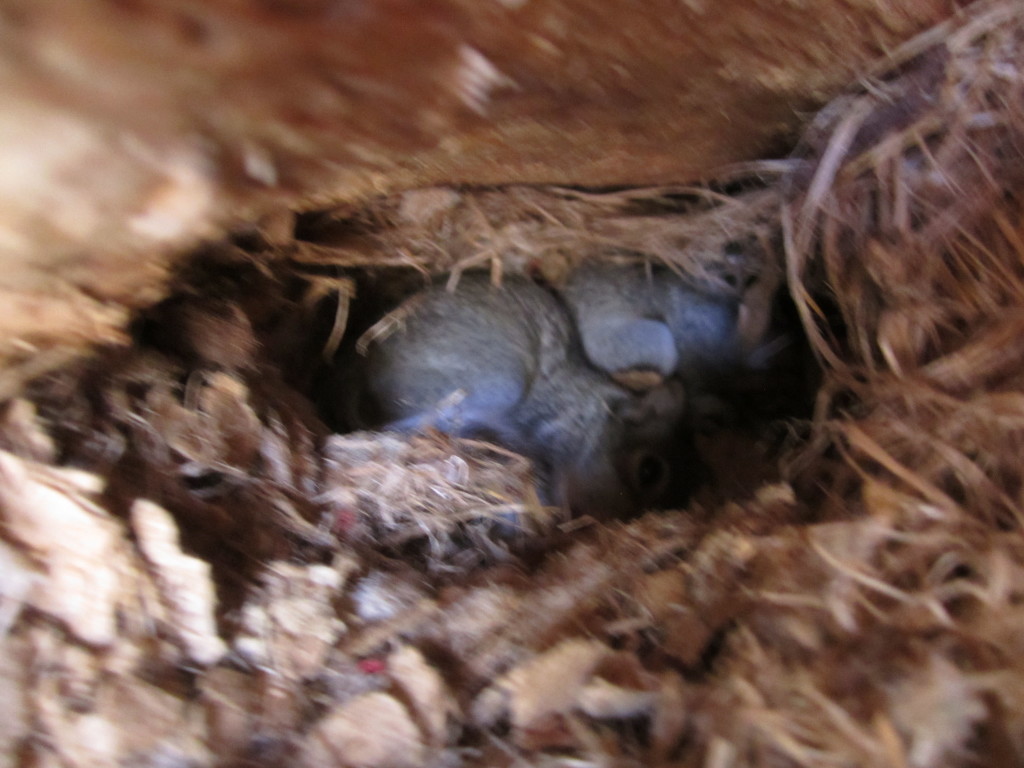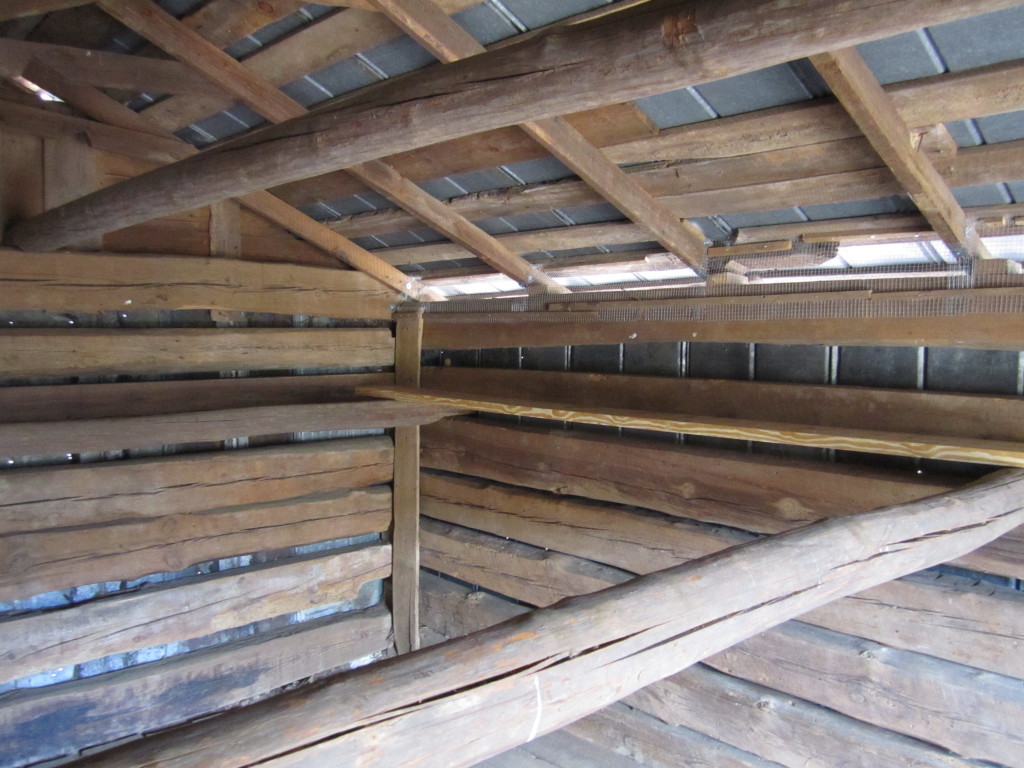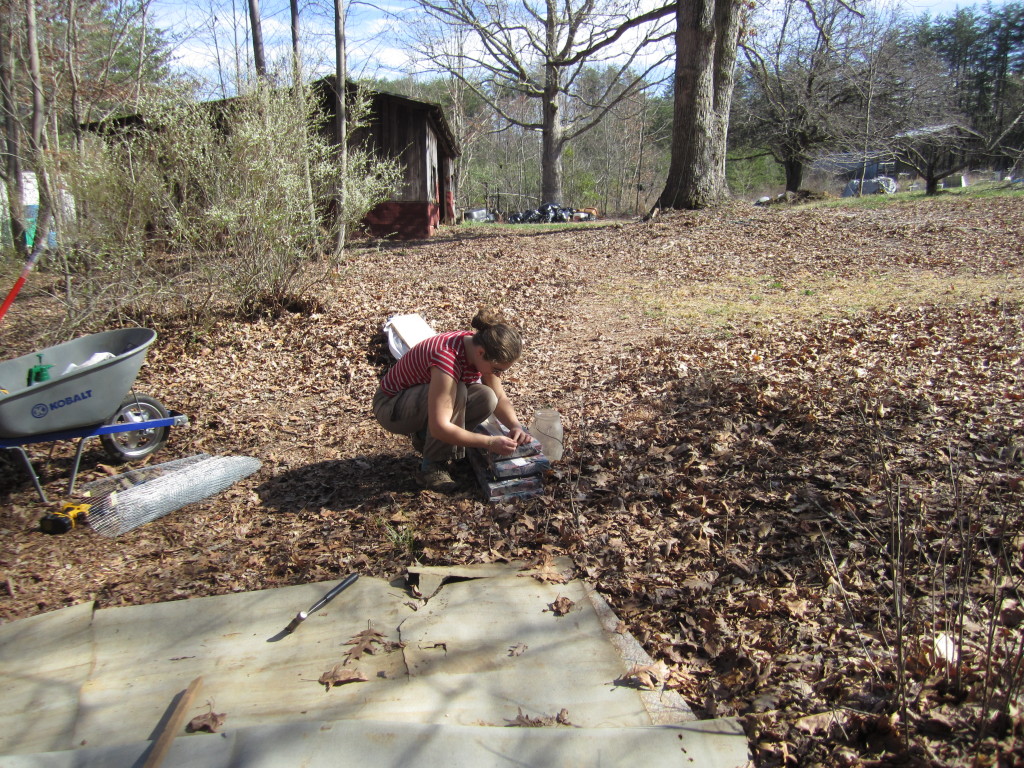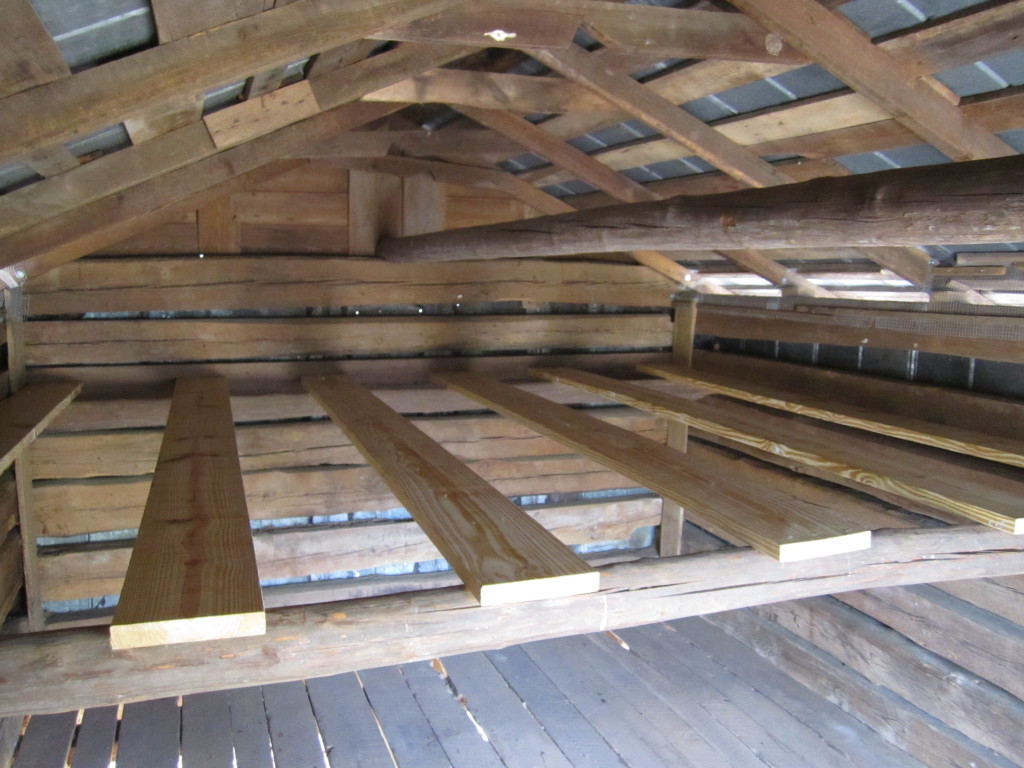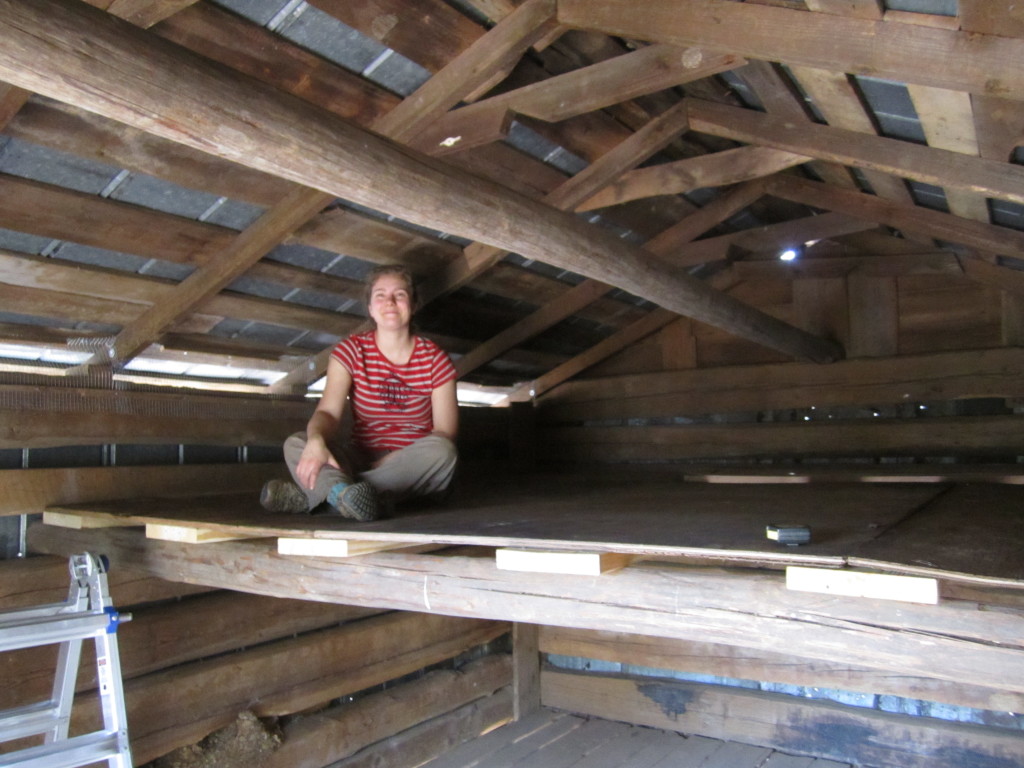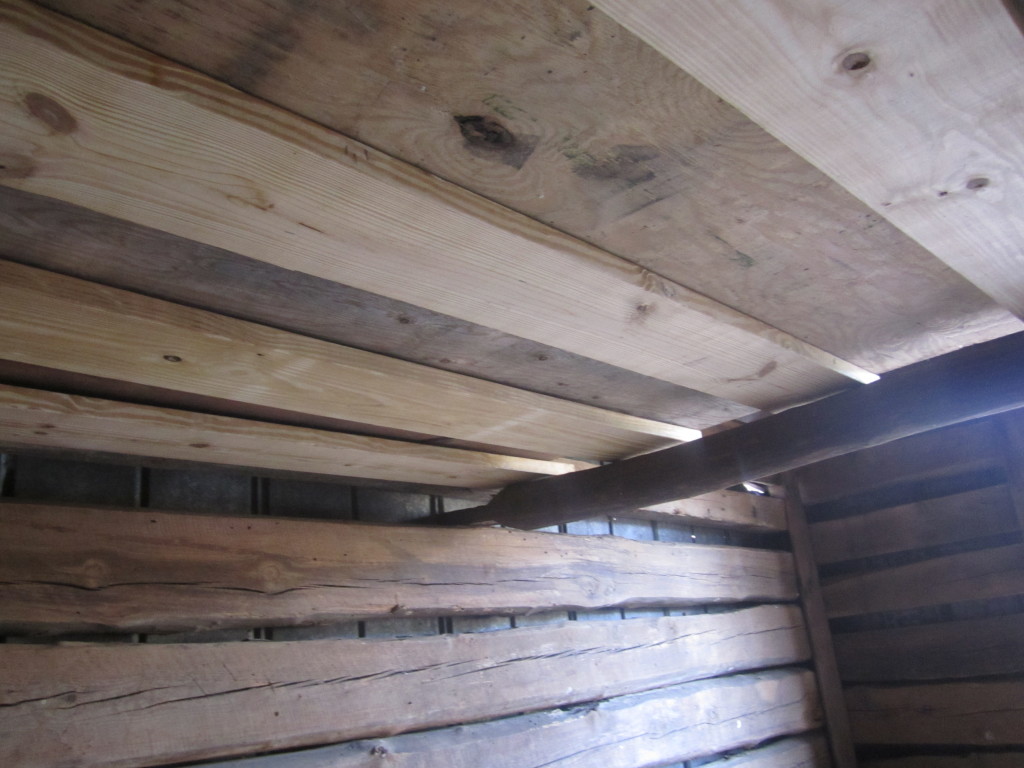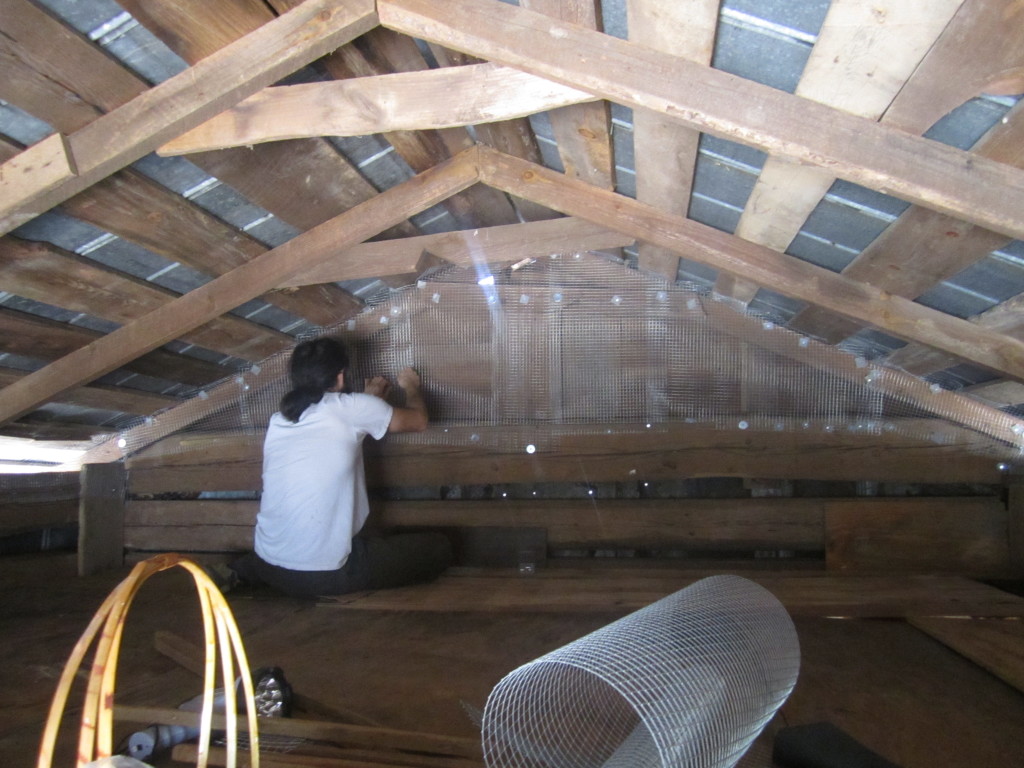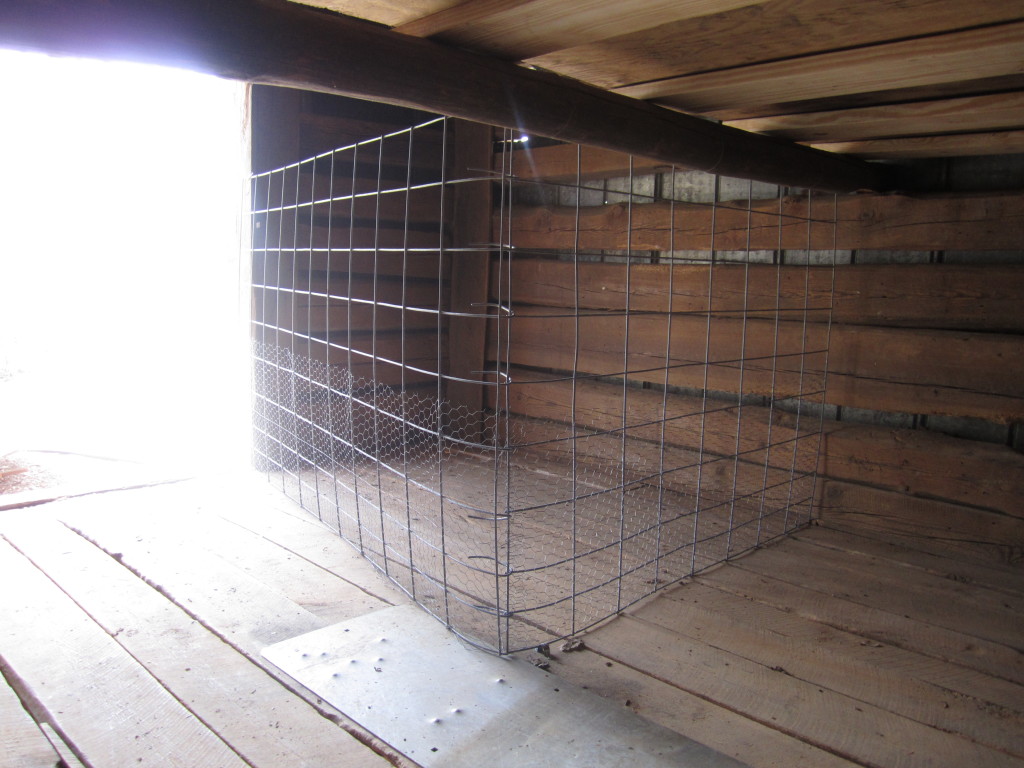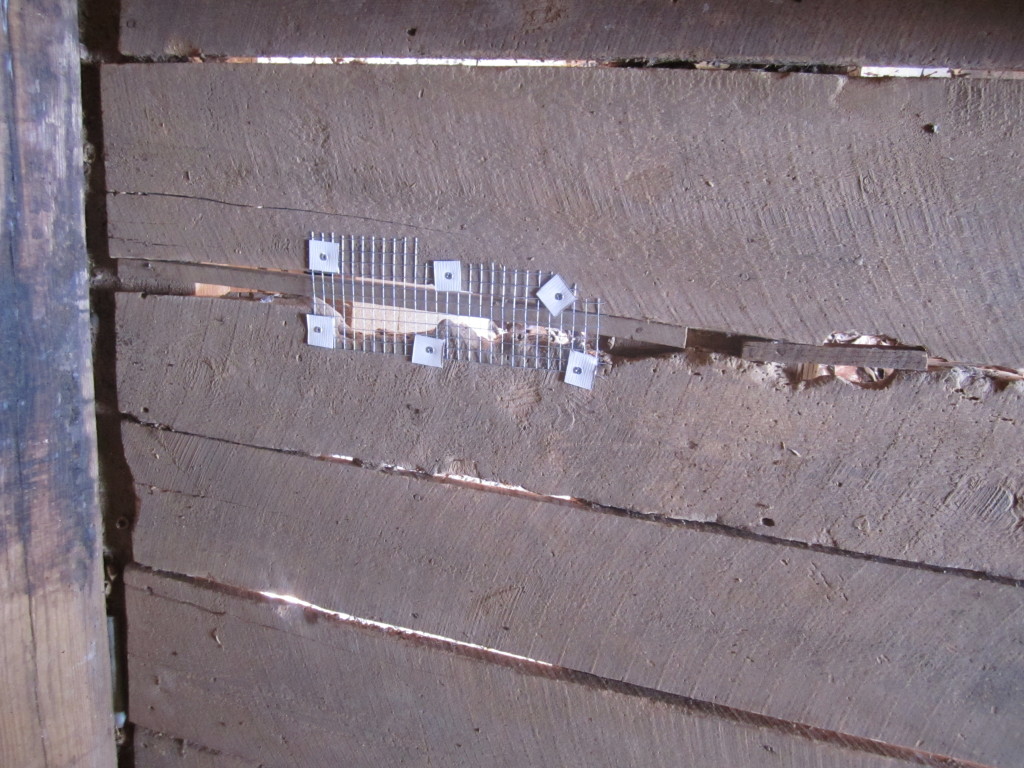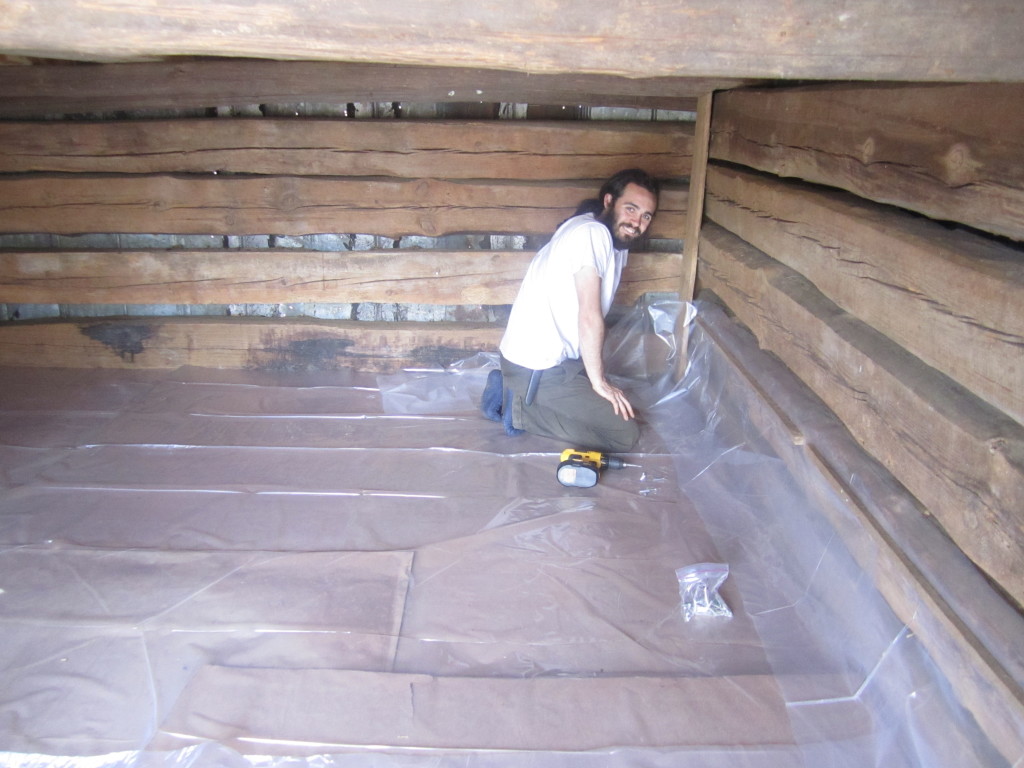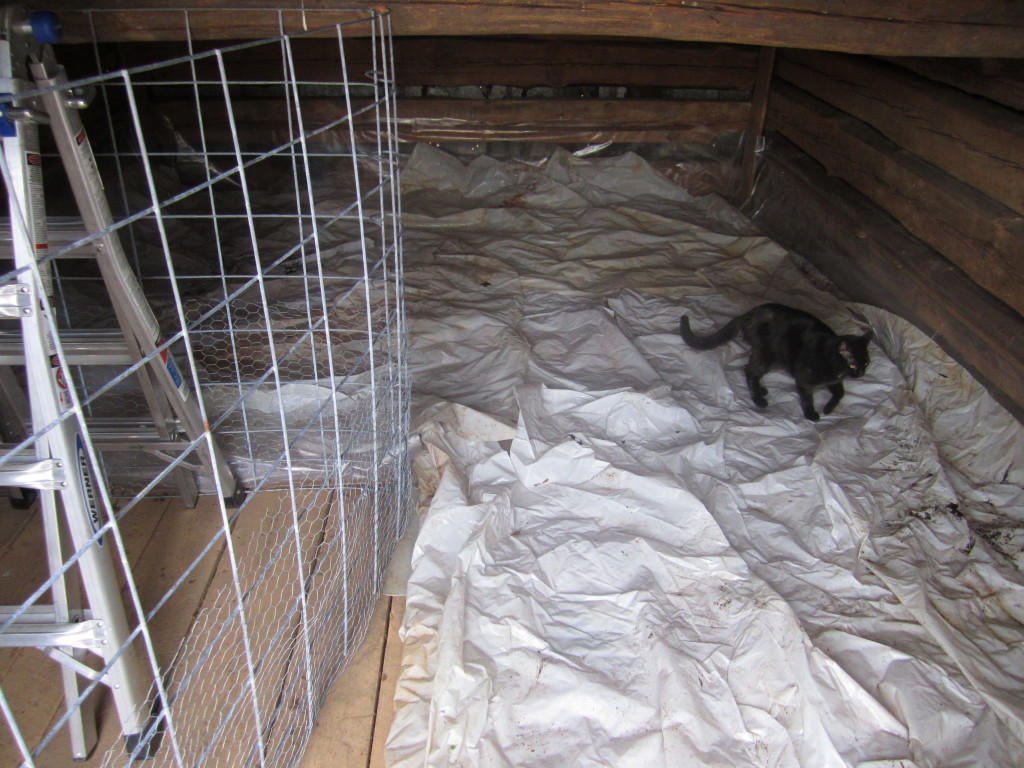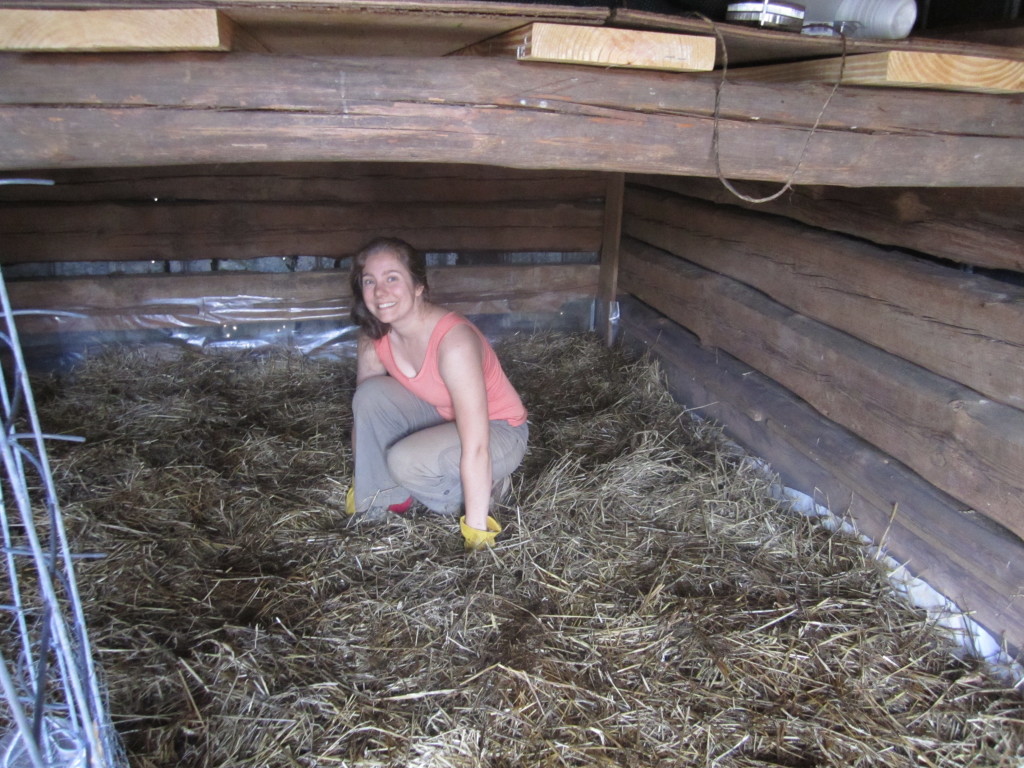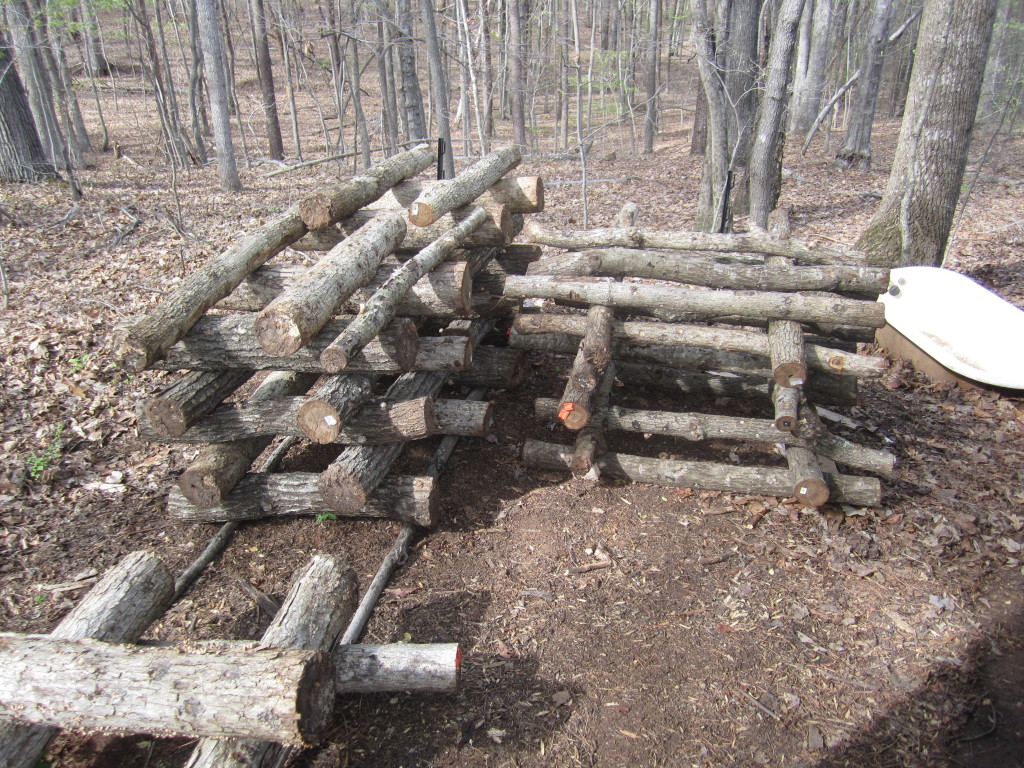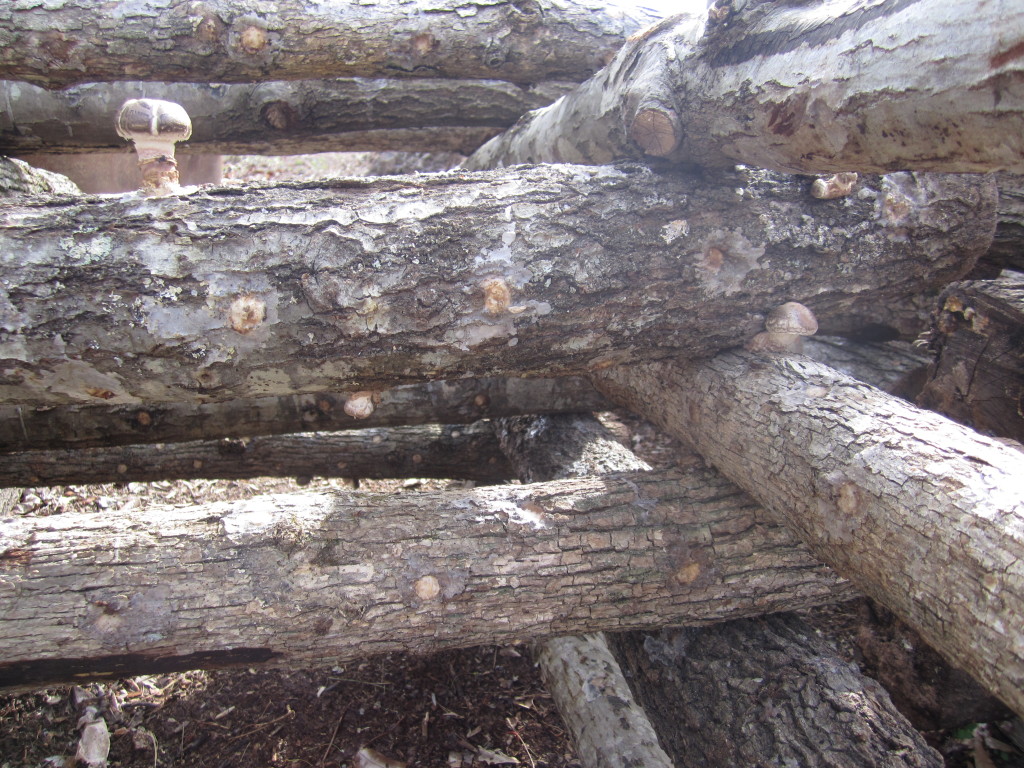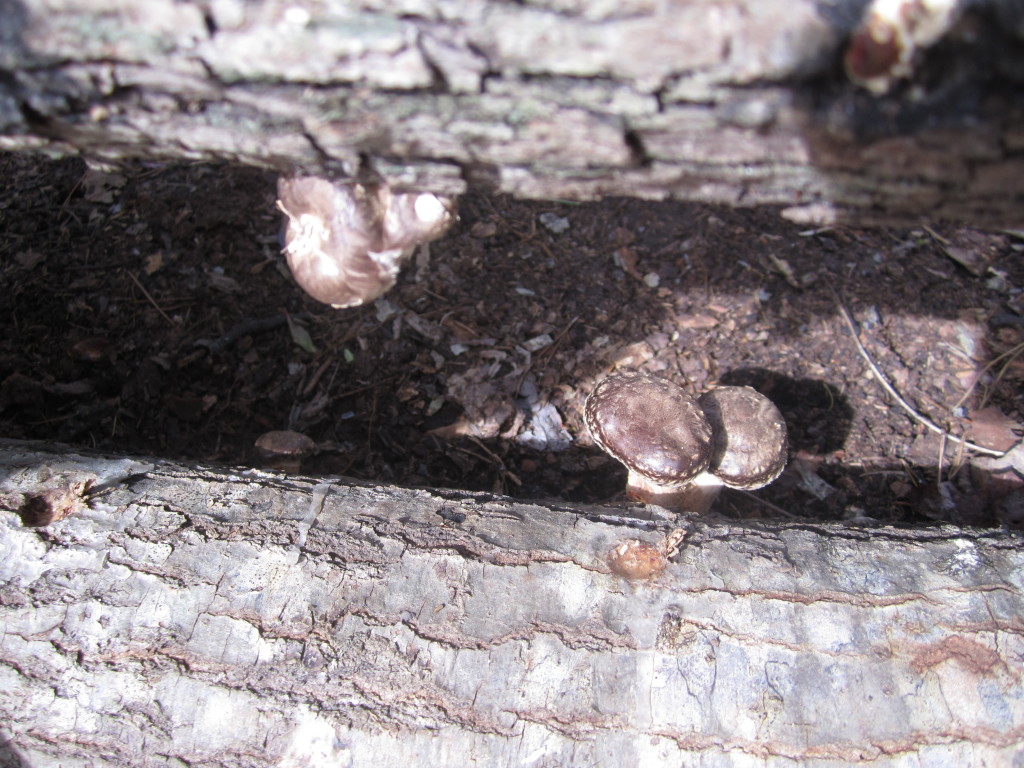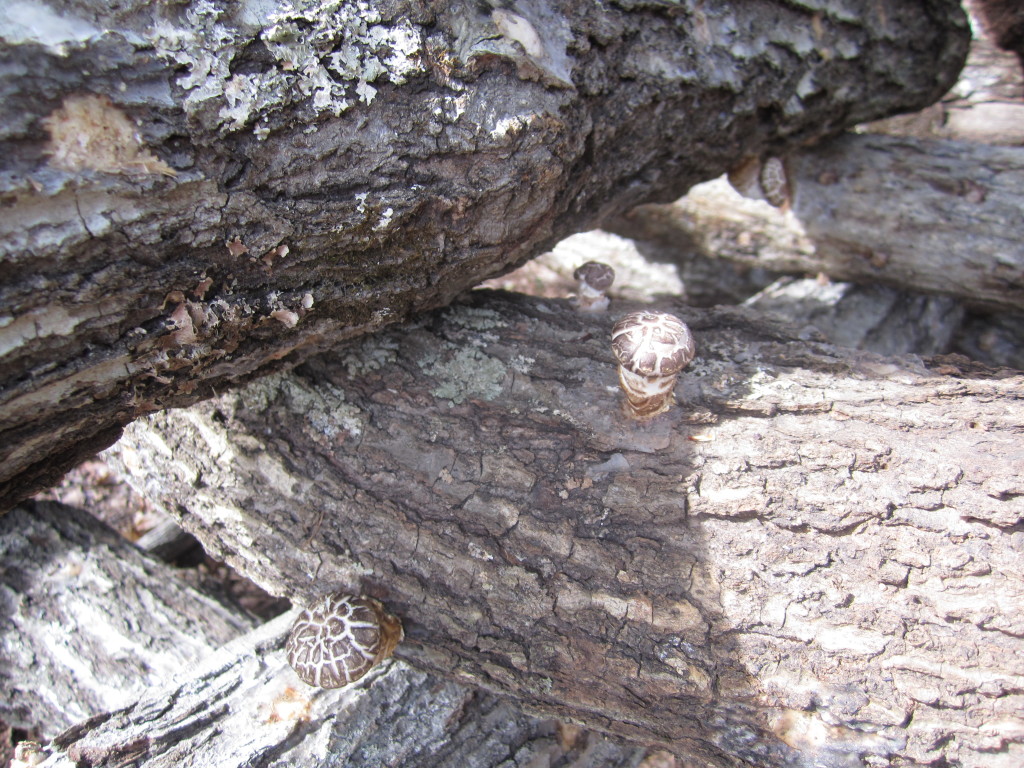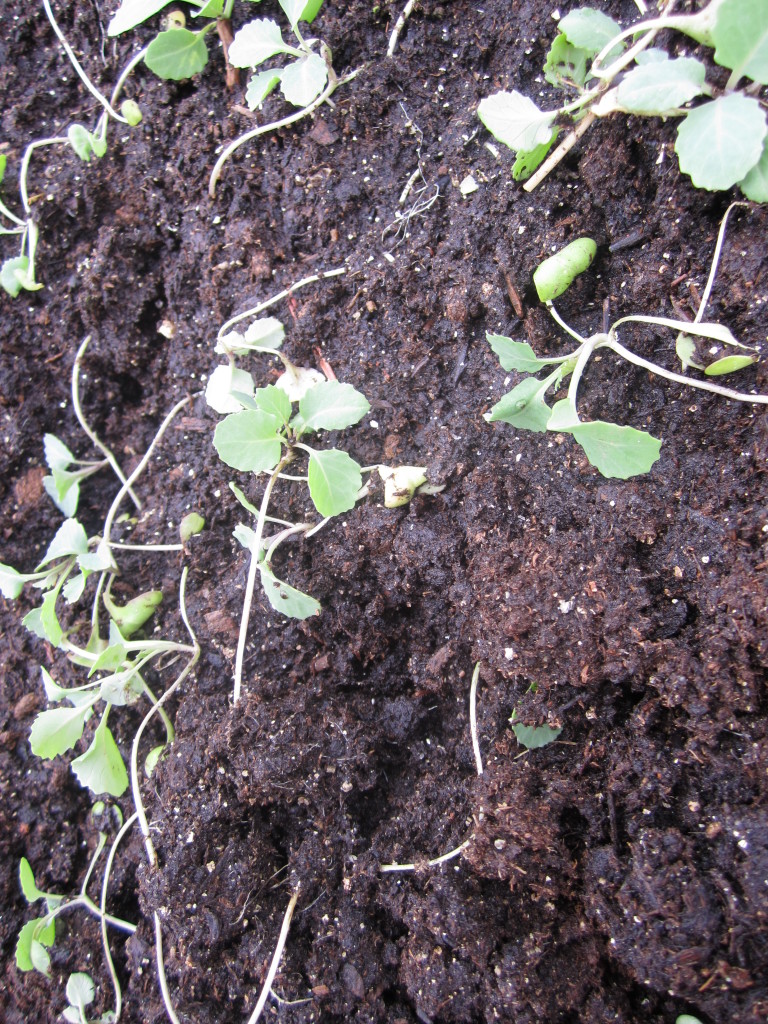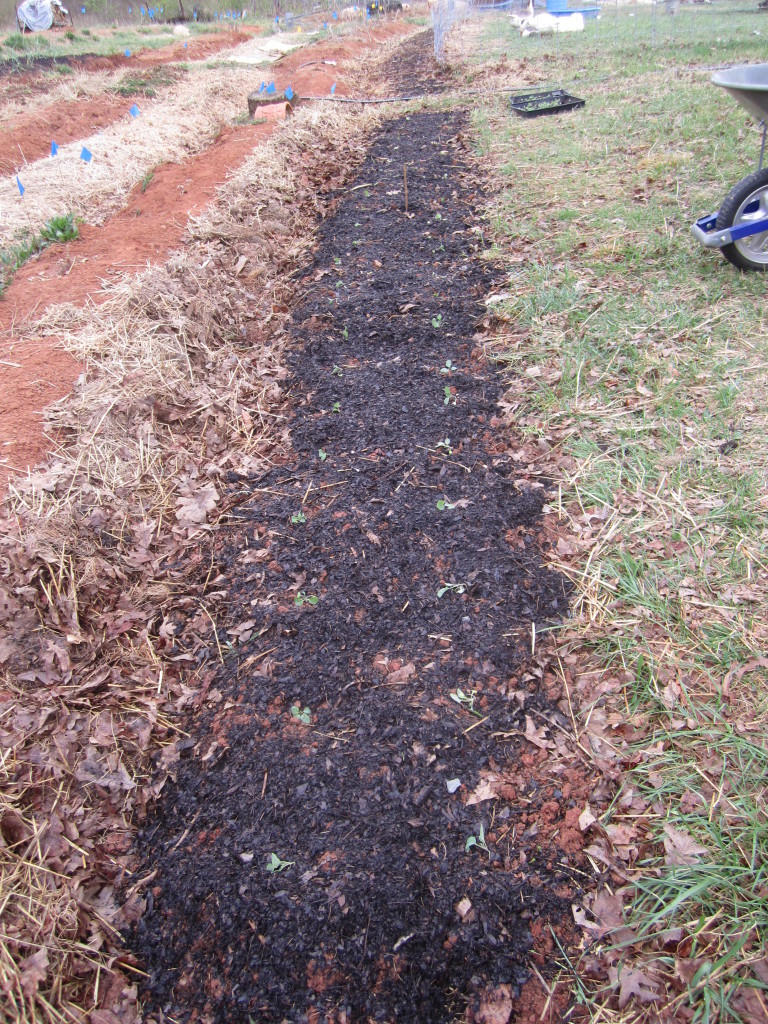It has been a little over a week since our pot belly pig, Louise, had her litter of babies. Since then, her sister Thelma has also had her babies and both mothers are doing great and raising cute, healthy babies!
This is the account of the birth of Louise’s babies (the little bit that I experienced of it):
Early on the morning of May 1, I went out in the predawn to feed Louise and found that she had annihilated the patch of blackberries that was in her pen. She hadn’t eaten them, though, simply sniped them off at the ground and piled them high in the corner of the pen. She had also gathered any grasses that were growing in the pen and even thought a bit of the hanging tarp above her would be good for her nest.
Through my research, I learned that a pig that is about to give birth obsessively makes a nest for her and her babies about 12 hours before she goes into labor. I love the parallel with human mammals… How women often feel that nesting urge a few days before giving birth. I think it is fantastic that our mammal bodies know what is coming, even if our conscious brains do not.
So when I went out to feed her and saw that her nest was complete and she was laying on it, I knew her time was near! I was concerned that the blackberries vines would be too scratchy, so Jason added wooden wool to the pen and she quickly grabbed it with her mouth and started redesigning her nest.
I spent all day at work hoping that I wouldn’t miss the births, but when I got home I saw that I had missed them! There were 7 healthy babies, all dried off and nursing! I was able to go in the pen and sit right next to Louise since she was still in labor (having not yet delivered the placenta). Normally she would NOT allow this, but I sat down quietly and gently and didn’t try to touch her babies so she calmed down. I was able to pat her and talk to her and that was nice. I was hoping that she would deliver more babies but since the others were all so clean and dry, I thought that she was likely done delivering.
I left to bring her some more hay for bedding and when I returned I saw that she had in fact delivered another baby, but when I got closer I could see that the bay was a stillborn. It was a little black piglet, unmoving and not breathing. I picked him up and rubbed his chest to see if he might breathe with some help and tried to blow some air into his lungs, but he didn’t move. I think he had probably died a little while before in the womb, and therefore it was harder for her to deliver him, so he was born last.
We buried him next to our blackberry bush in the garden. With 7 healthy and chubby babies, Louise and Jason and I have a lot of life to be thankful for!
About an hour later she delivered the placenta and I “kidnapped” it to have a closer look at this amazing organ! Much to my surprise, Louise delivered another placenta later, as if she was a human mother bearing twins! Her sister, Thelma, also delivered 8 babies but only one placenta.
Louise quickly recovered and luckily I was able to pick up a couple of her babies before she was up on her feet again (since she would not have allowed it if I had tried just 30 minutes later).
She ate her second placenta (or so I assume since it disappeared), drank water, and did not eat other solid foods that day. Mother pigs don’t need food on the birth day, but do need extra food after that!
Now her babies are amazingly fatter and cuter and are started to look more piglet-like. Five are pink and two are black, one with white “stockings.” 4 are male and 3 are female, and the stillborn was also a male. She has let me touch a few of them gently both from outside the cage and from within. She always keeps an eye on me, though.
Her piglets are innately very socially conscious… They are born knowing to leave the nest to pee or poop and they spend a lot of time snuggling with each other and walking around, exercising their legs!
Overall, an extraordinary experience! I’m so happy to see many more pot belly pig births in my life!
.:.
